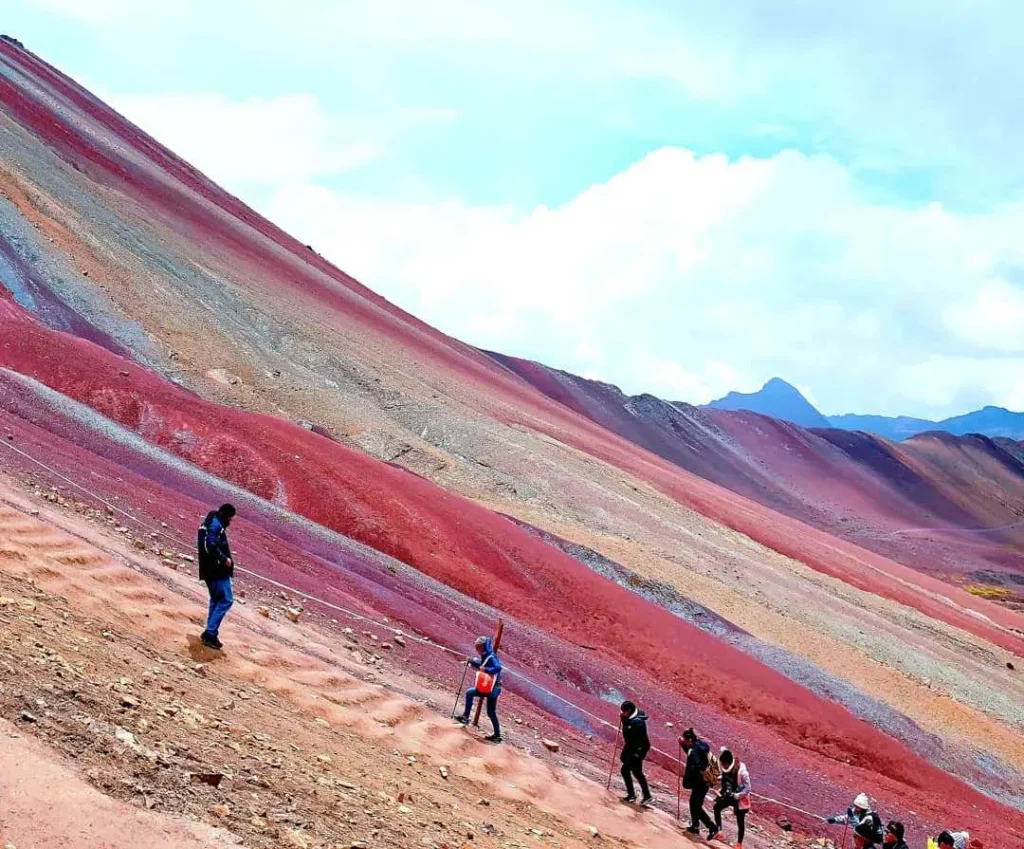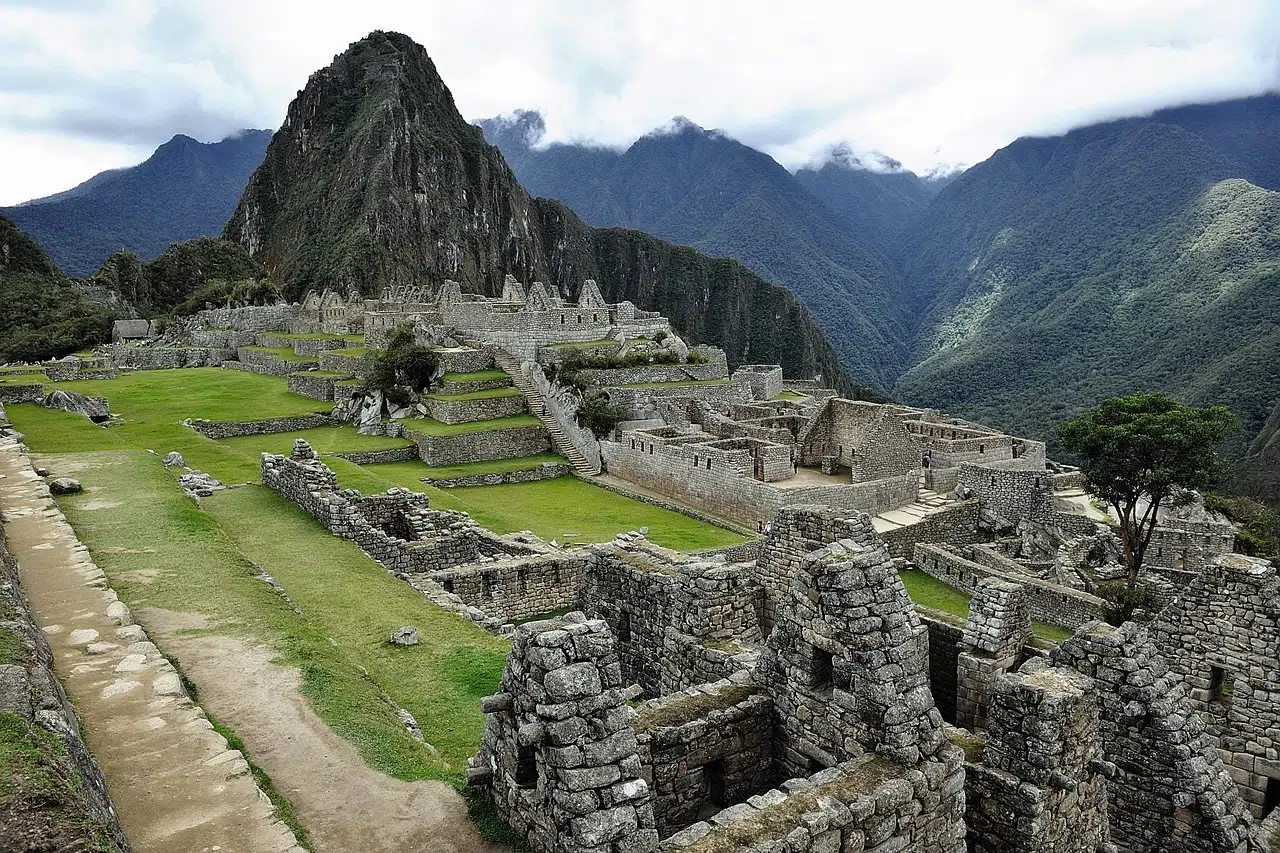My Battle with the Thin Air
Having learned the hard way, I’ve compiled this guide to help you prepare for and conquer altitude sickness at Rainbow Mountain (5,200m). From pre-trip acclimatization to on-the-trail remedies, here’s everything I wish I’d known before my hike.
I’ll never forget the moment I first glimpsed Rainbow Mountain—its stripes of red, turquoise, and gold shimmering under the Andean sun. But the exhilaration was short-lived. By the time I reached 4,800 meters, my head was pounding, my breath came in shallow gasps, and nausea threatened to derail the entire trek. Altitude sickness, or soroche as locals call it, is Rainbow Mountain’s silent challenge, striking even the fittest travelers.
Table of Contents
1. Understanding Altitude Sickness: Why Rainbow Mountain is Risky
The Science Behind the Sickness
At 5,200 meters (17,060 ft), Rainbow Mountain’s oxygen levels are nearly half those at sea level 78. This forces your body to work harder, leading to:
- Headaches (the most common symptom) 610.
- Nausea, dizziness, and fatigue 17.
- Severe cases: Pulmonary or cerebral edema (rare but life-threatening) 6.
Key Fact: Altitude sickness doesn’t discriminate—even athletes can suffer, while sedentary travelers might feel fine 1.
2. How to Prevent Altitude Sickness
A. Acclimatize Like a Pro
- Spend 2–3 days in Cusco (3,400m) before attempting Rainbow Mountain 210.
- My mistake: I hiked on Day 2 and paid the price. Wait until Day 3 or 4!
- Day trips? Consider lower-altitude hikes first (e.g., Humantay Lake) 10.
B. Fuel Your Body
- Hydrate aggressively: Drink 6–8 liters of water daily in Cusco 27.
- Eat light, carb-heavy meals: Avoid alcohol and fatty foods 710.
- Coca leaves: Chew them or drink coca tea—a local remedy for centuries 14.
C. Medication & Gear
- Ask your doctor about acetazolamide (Diamox) to speed acclimatization 710.
- Pack emergency oxygen: Many tours provide tanks—verify before booking 411.
3. On the Trail: Managing Symptoms
A. Pace Yourself
- Hike slowly: Rushing increases oxygen demand. Rest every 20–30 minutes 110.
- Horseback option: Rent a horse (60–100 soles) for the steepest sections 111.
B. Recognize Warning Signs
- Mild symptoms: Headache, fatigue. Rest, hydrate, and chew coca leaves 67.
- Severe symptoms: Confusion, inability to walk. Descend immediately 710.
Pro Tip: Book a tour with qualified guides and first-aid kits 411.

4. My Personal Recovery Plan
When I collapsed near the summit, my guide sprang into action:
- Oxygen tank: 5 minutes of oxygen restored my breathing 11.
- Coca tea + ibuprofen: Eased my headache within 30 minutes 110.
- Emergency descent: We skipped the summit—health trumps photos!
5. Who Should Avoid Rainbow Mountain?
- Pregnant women or those with heart/lung conditions 17.
- Children under 8 (unless fully acclimatized) 7.
Additional information
Why Altitude is a Challenge at Rainbow Mountain
Rainbow Mountain (Vinicunca), located in the Peruvian Andes, sits at a staggering altitude of over 5,000 meters (16,500 feet). This unique and colorful destination draws thousands of tourists annually, but its high altitude presents a significant challenge for many. For those unaccustomed to high elevations, altitude sickness can quickly turn an exciting adventure into an unpleasant experience. In this guide, we’ll explore why altitude is such a challenge at Rainbow Mountain and provide tips to help you prevent and manage altitude sickness, ensuring your trek is both safe and enjoyable.
What Causes Altitude Sickness?
Explanation of Altitude Effects on the Body
Altitude sickness, also known as acute mountain sickness (AMS), occurs when your body cannot adjust to the lower oxygen levels at high altitudes. As you ascend above 2,500 meters (8,200 feet), the air becomes thinner, meaning there is less oxygen for your body to use. Your body needs time to adapt, and when it doesn’t, symptoms of altitude sickness can appear.
The lack of oxygen can cause physical stress on the body, leading to symptoms such as headaches, nausea, dizziness, and fatigue. The higher you climb, the more difficult it is for your body to adjust, which is why trekking at altitudes over 5,000 meters, like at Rainbow Mountain, is especially challenging.
You can also read:
- The Ultimate Guide to Rainbow Mountain Cusco, Peru: Everything You Need to Know
- The Ultimate Guide to Humantay Lake Cusco: Everything You Need to Know for Your Adventure
- Rainbow Mountain Cusco Peru: A Complete Guide to Vinicunca’s Colorful Peaks
Symptoms of Altitude Sickness: What to Watch For
Common Signs and How to Identify Them
Before you embark on your journey to Rainbow Mountain, it’s essential to recognize the symptoms of altitude sickness so you can take action early:
- Headache: A dull, persistent headache is often the first sign of AMS.
- Nausea and Vomiting: You may feel nauseous, lose your appetite, or even vomit.
- Dizziness or Light-headedness: Feeling unsteady or faint is a common symptom.
- Shortness of Breath: Even when resting, you might find it harder to catch your breath.
- Fatigue: You may feel unusually tired, even after little physical exertion.
- Difficulty Sleeping: Many people struggle with insomnia or disturbed sleep at high altitudes.
If you experience any of these symptoms while trekking, it’s crucial to listen to your body and respond appropriately to prevent the condition from worsening.

Hike to the Breathtaking Rainbow Mountain! 🌈
Embark on an unforgettable trekking adventure to Vinicunca (Rainbow Mountain) and witness its stunning natural colors. Challenge yourself, immerse in Andean landscapes, and capture breathtaking views. Book your Rainbow Mountain tour today!
How to Prevent Altitude Sickness Before Your Trek
Acclimatization Tips and Pre-Trek Preparation
Preparation is key to preventing altitude sickness when trekking to Rainbow Mountain. Here are some practical tips to help your body adjust:
- Spend Time Acclimatizing: Before heading to Rainbow Mountain, spend a few days in Cusco (3,400 meters/11,150 feet) or the Sacred Valley. This gives your body a chance to adjust to the higher altitude gradually.
- Stay Hydrated: Dehydration can worsen altitude sickness. Drink plenty of water throughout the day, and avoid alcohol and caffeine, as they can contribute to dehydration.
- Eat Light and Nutritious Meals: Your body uses more energy at higher altitudes, so focus on eating easily digestible, high-energy foods. Avoid heavy meals, as digestion can be slower at altitude.
- Avoid Overexertion: On your first few days at a higher altitude, take it easy. Don’t push yourself too hard physically; allow your body to acclimate.
- Consider Altitude Medication: If you are concerned about altitude sickness, consult your doctor before your trip. Medications like acetazolamide (Diamox) can help speed up acclimatization and reduce symptoms.

Ride an ATV to Rainbow Mountain – Adventure Awaits! 🌄
Skip the long hike and explore Rainbow Mountain on an ATV for an adrenaline-filled experience! Ride through scenic Andean valleys and reach the summit with ease. Secure your spot on this thrilling ATV tour today!
Treating Altitude Sickness on the Mountain
Remedies and Medications to Carry
Despite your best efforts, you may still experience symptoms of altitude sickness during your trek. Knowing how to manage these symptoms is essential to prevent them from becoming severe:
- Descend Immediately: The most effective treatment for altitude sickness is descending to a lower altitude. If you experience severe symptoms, such as confusion, inability to walk, or difficulty breathing, descend as quickly and safely as possible.
- Rest and Hydrate: If symptoms are mild, take a break, drink water, and eat some snacks. Resting allows your body to catch up and adjust to the altitude.
- Chew Coca Leaves or Drink Coca Tea: A traditional remedy used by locals in the Andes, coca leaves can help alleviate symptoms of altitude sickness. You can either chew the leaves or drink coca tea.
- Use Oxygen: Some guided tours to Rainbow Mountain provide supplemental oxygen. If you’re struggling to breathe, don’t hesitate to use it.
- Take Over-the-Counter Pain Relievers: For headaches, ibuprofen or paracetamol can help reduce discomfort. Just be mindful of any other symptoms and make sure you’re addressing the root cause, not just masking it.
- Altitude Medications: If you’ve been prescribed altitude sickness medication like Diamox, take it as directed. It can help reduce symptoms and prevent them from worsening.
Conclusion: Staying Safe at High Altitudes
Rainbow Mountain is a breathtaking destination, but the high altitude demands respect and careful preparation. By taking the necessary precautions to acclimatize, recognizing the symptoms of altitude sickness, and knowing how to treat it if it occurs, you can ensure a safe and enjoyable trek. Remember, your health comes first—if you’re feeling unwell, don’t be afraid to turn back or descend. The mountains will always be there for another adventure!



